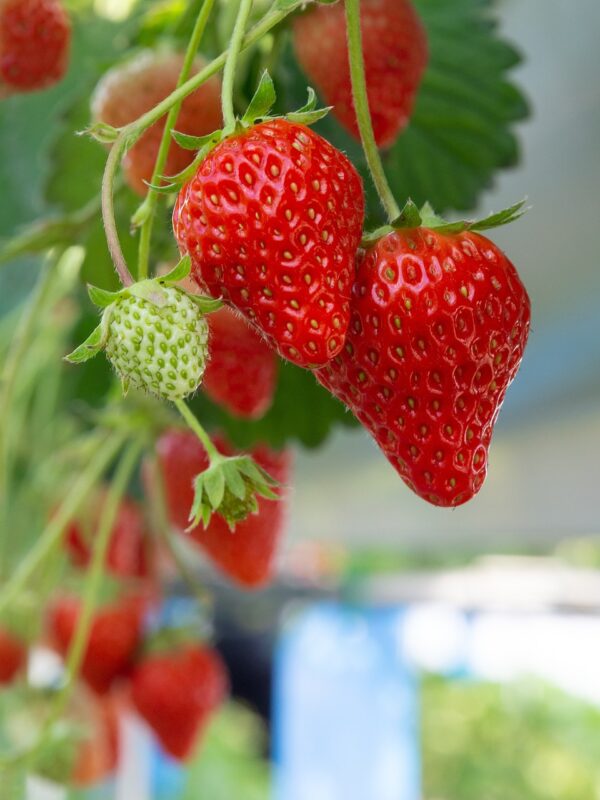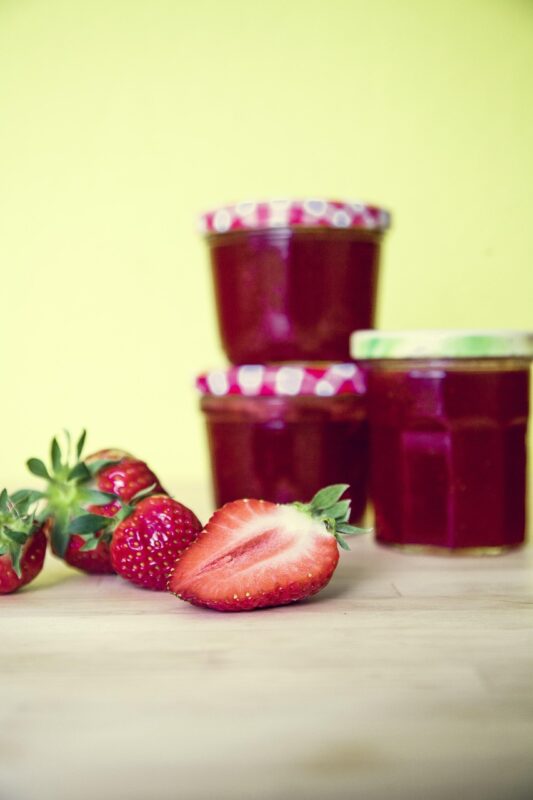Growing strawberries in pots is an enticing option for gardeners, especially those with limited space or those who want to create a beautiful green oasis on their patios, balconies, or windowsills.
In this comprehensive guide, we’ll explore everything you need to know about planting strawberries in pots, from selecting the right variety to optimal care and maintenance, ensuring that your strawberries thrive throughout their growing season.
Choosing the Right Strawberry Varieties for Containers
When planting strawberries in pots, selecting the right variety that aligns with your growing conditions and aesthetic desire is crucial. Here, we’ll discuss a few popular types of strawberries that do particularly well in containers.
June-Bearing Strawberries
June-bearing strawberries produce a single, large crop each June. These plants typically require more care to establish, but they are known for their high yield and sweet fruit. Some popular June-bearing varieties include ‘Earliglow’ and ‘Allstar.’ When growing these in pots, ensure that you choose a container that is at least 12 inches deep to accommodate their root systems.
Everbearing Strawberries
Everbearing types like ‘Ozark Beauty’ or ‘Quinault’ have the advantage of producing fruit throughout the growing season, from spring until fall. These varieties are ideal for container gardening if you desire a continuous supply of fresh strawberries. They can adapt well to compact growing conditions, so they suit a variety of pot sizes, though larger pots will enable better growth.
Day-Neutral Strawberries
Day-neutral strawberries, such as ‘Seascape’ and ‘Albion,’ are excellent for container gardening because they set fruit regardless of day length. This means that you can enjoy ripe strawberries from late spring until the first frost. Their compact nature makes them perfect for smaller pots or window boxes, and they often have a higher resistance to disease, making them a solid choice for novice gardeners.
Selecting the Right Pot for Strawberries
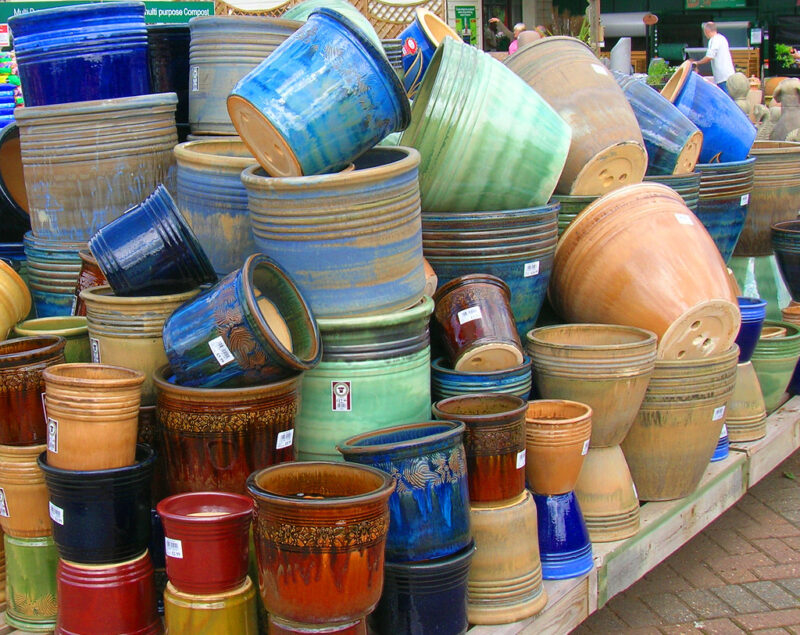
Choosing the right pot is essential for ensuring your strawberries grow healthily. Below are key considerations when selecting containers for your strawberry plants.
Size Matters
Opt for pots that are at least 12 inches in diameter and 12 inches deep. This size provides ample space for the root system to develop. If you plan to grow multiple strawberry plants in one pot, larger containers, such as 16-inch or 18-inch pots, offer more room for spreading and help prevent overcrowding.
Drainage is Key
Proper drainage is crucial for strawberry health. Excess moisture can lead to root rot, a common issue with strawberries. Look for pots that have drainage holes at the bottom and consider adding extra holes if necessary. If you’re using decorative pots without drainage, place a smaller pot inside or create a drainage layer at the bottom using gravel or perlite.
Materials Matter
Strawberry pots can be made from various materials including clay, plastic, and ceramic. Each material has its benefits and drawbacks. Clay pots are breathable and help to keep soil moisture levels consistent, but they can dry out quickly. While plastic pots are lightweight and retain moisture longer, they can lead to overheating in hot weather. Ultimately, the choice of material may depend on your climate and aesthetic preferences.
Preparing the Soil for Strawberries
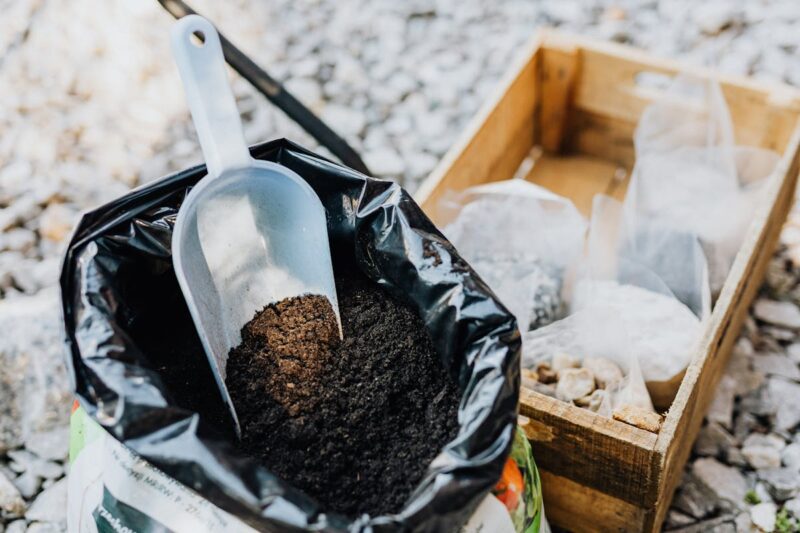
Once you have your pots and strawberry varieties selected, it’s time to prepare the soil. The success of your strawberries largely depends on the quality of the soil you use.
Choosing the Right Mix
A high-quality potting mix specifically formulated for fruits or vegetables is your best bet for growing strawberries. These mixes often provide a blend of peat moss, coconut coir, perlite, and organic fertilizer to ensure that your strawberries have the nutrients they need. Avoid using garden soil, as it can be too dense for container gardening and may harbor diseases or pests.
Modifying the Soil Mix
To enhance drainage and aeration, consider mixing in some coarse sand or additional perlite. A balanced fertilizer can also be mixed into the soil to provide essential nutrients at the start of the growing season. Additionally, you might want to consider adding some organic compost, which not only enriches the soil but also encourages beneficial microbial activity.
Planting Strawberries in Pots
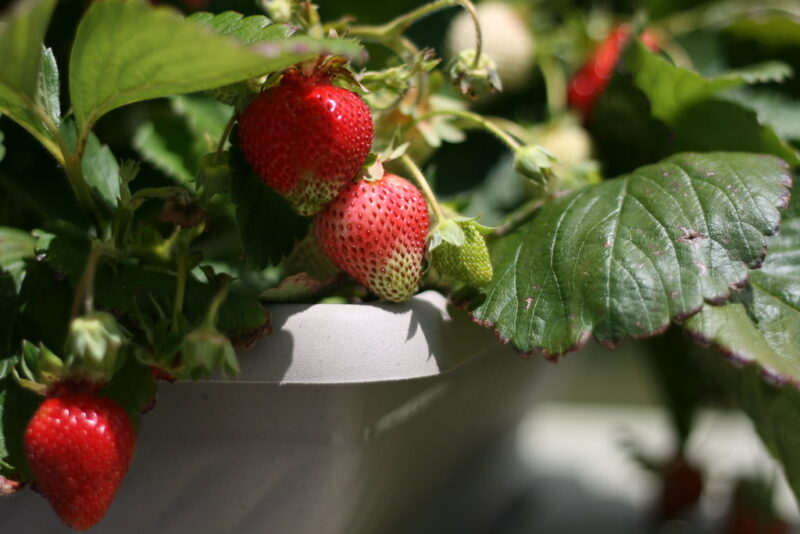
Now that you have prepared the pots and soil, it’s time to plant your strawberries. This can be one of the most exciting stages of the process!
Timing the Planting
The best time to plant strawberries is in the spring as the danger of frost passes. However, if you’re in a warmer climate, you can also plant in the fall as long as the plants have enough time to establish roots before the winter.
Planting Technique
Fill the Pot: Start by filling your pot with the prepared potting mix, leaving about an inch of space at the top to prevent soil from spilling out when watering.
Create a Hole: Make a small hole in the center of the soil where you’ll place the strawberry plant. If you’re planting multiple plants, ensure they are spaced about 12 inches apart.
Position the Plant: Gently place the strawberry plant into the hole, making sure that the crown (where the leaves meet the roots) sits level with the soil surface. If the crown is buried too deep, it may rot; if it’s too high, it may dry out.
Fill and Pack Down: Carefully fill around the plant with soil and lightly pack it down to eliminate air pockets.
Water Thoroughly: After planting, water the strawberries liberally to help settle the soil around the roots.
Caring for Potted Strawberries
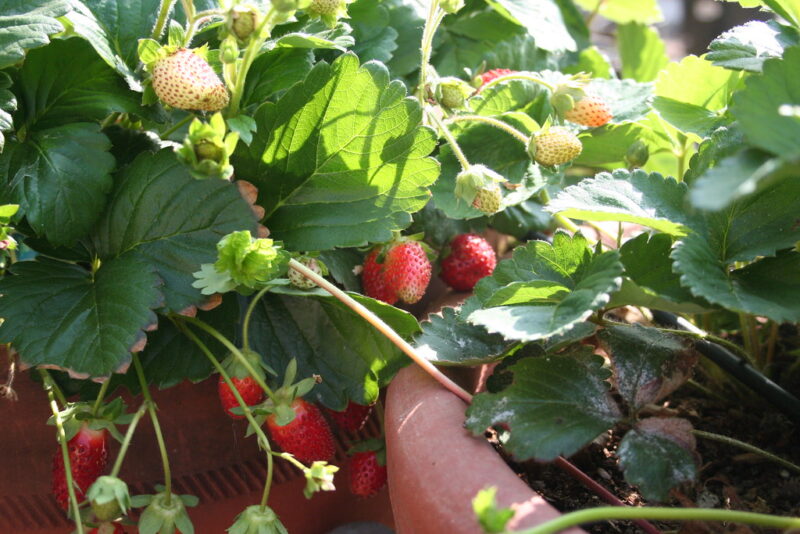
Successful strawberry cultivation requires ongoing care, and when grown in pots, you’ll need to adjust your routine a bit compared to in-ground strawberries.
Watering
Strawberries require consistently moist soil, particularly during the fruiting season. The key is to keep the soil evenly moist but not waterlogged. Typically, a deep watering of pots every few days is ideal, although this may vary depending on your climate and pot size. Monitor your plants regularly, and if the top inch of soil feels dry, it’s time to water.
Fertilizing
Providing nutrients is essential for healthy strawberry development. After planting, fertilize your strawberries with a balanced fertilizer every four to six weeks. Consider using organic options like fish emulsion or a well-balanced compost. It’s important to read and follow the instructions on fertilization on the product label to avoid over-fertilizing, which can harm plants.
Pruning and Maintenance
To ensure healthy growth and prevent overcrowding, prune any dead or damaged leaves. If your plants produce runners (long stems that sprout new plants), trim these if you’re focused on fruit production, or allow some to root if you want to expand your strawberry patch. Keep an eye out for pests such as aphids or spider mites; use appropriate organic pesticides or insecticidal soap if you notice any infestations.
Providing Support
If you’ve chosen taller strawberry varieties with a tendency to sprawl, consider supporting them with cages or stakes to keep them upright. This will help prevent fungal diseases by ensuring that the foliage remains dry and also improve air circulation.
Harvesting Your Strawberries
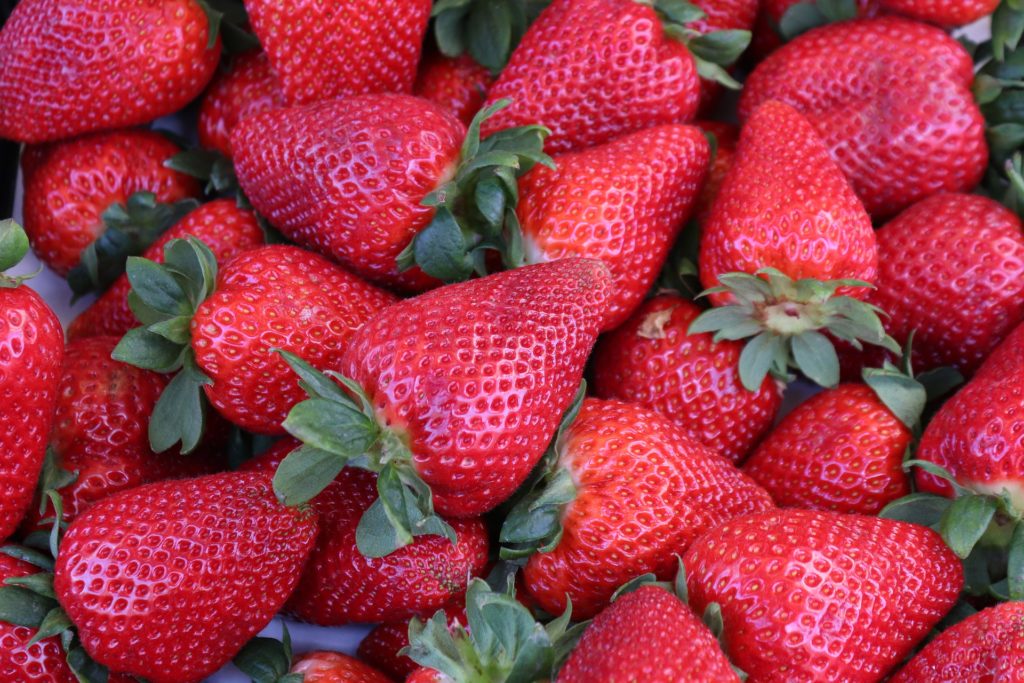
The ultimate reward for your hard work comes when it’s time to harvest the fruits!
When to Harvest
Strawberries typically take about 4-6 weeks after flowering to bear fruit, depending on the variety. Look for fully colored berries that are firm but slightly soft to the touch. It’s best to harvest your strawberries in the morning when temperatures are cooler to preserve their freshness.
How to Harvest
Use scissors or pruning shears to cut the berry from the plant, leaving a small stem attached. This prevents damage to the plant and encourages further production. If you simply pull the berries, you could risk damaging the crown or roots of the plant, which could inhibit further growth.
Troubleshooting Common Issues
Even with the best intentions, growing strawberries in pots can come with a few challenges. Here, we will discuss some common issues you might face and how to overcome them.
Foliar Diseases
One of the most frequent issues with strawberries grown in pots is foliar diseases, such as powdery mildew or leaf spot. To prevent these problems, ensure that your plants have good air circulation, avoid overcrowding, and water early in the day so foliage dries quickly.
Pest Problems
Common pests like aphids, spider mites, and slugs can be a headache for strawberry plants. Regularly inspect your plants for signs of infestation, and take preventive measures like introducing beneficial insects (like ladybugs) or using insecticidal soap as necessary.
Nutrient Deficiencies
If you notice yellowing leaves or stunted growth, your strawberries may be experiencing nutrient deficiencies. This can often be remedied by applying the appropriate fertilizer. Always check the pH of the soil; strawberries prefer a pH between 5.5 and 6.5.
Enjoying Your Homegrown Strawberries
Once you’ve successfully grown your strawberries, it’s time to enjoy the results. Fresh strawberries are great for snacking straight off the plant or can be used in a plethora of desserts such as pies, jams, or smoothies.
Creative Uses
Here are a few delightful ways to incorporate your homegrown strawberries into your meals:
Salads: Toss sliced strawberries into a fresh spinach or mixed greens salad for a burst of sweetness.
Desserts: Bake a strawberry shortcake or create a classic pavlova.
Jams and Preserves: Preserve your strawberries so you can enjoy the taste of homegrown fruit throughout the year.
Smoothies: Blend fresh strawberries with yogurt or almond milk for a refreshing drink.
Why Choose Container Gardening for Strawberries?
Container gardening offers several unique benefits for strawberry cultivation, making it a popular choice among both novice and experienced gardeners.
Space Efficiency
One of the most significant advantages of growing strawberries in pots is the efficient use of space. If you live in an apartment or have a small garden, containers allow you to utilize vertical space effectively. You can place pots on a deck, balcony railings, or even stack them in creative arrangements to maximize your planting area.
Mobility and Flexibility
Planting strawberries in containers grants you the ability to move them around. This is particularly advantageous because strawberries thrive best in full sun. If you’re unsure about the best light conditions in your garden or want to take advantage of seasonal changes, you can easily relocate your pots as needed. Furthermore, should an unexpected frost threaten your crop, you can bring your pots indoors or into a sheltered area.
Soil Control
When you grow strawberries in pots, you have complete control over the soil composition. This is crucial since strawberries prefer well-draining, nutrient-rich soil. You can create the perfect mix, selecting a potting mix designed for fruits that ensures proper drainage, aeration, and fertility.
Pest and Disease Management
Container gardening can also make it easier to manage pests and diseases. With strawberries planted directly in the ground, they are exposed to a variety of soil-borne pests and diseases. However, when growing in pots, you can monitor your plants more closely and take prompt measures to address any issues before they escalate.
Conclusion
The quest to grow strawberries in pots is not just fulfilling but incredibly rewarding as you navigate the journey from planting to harvest. With the right knowledge, tools, and care, anyone can indulge in the simple joy of homegrown strawberries. Whether you’re limited by space or simply prefer the aesthetics of container gardening, strawberries are an ideal candidate for pots.



